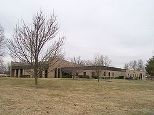 By Rabbi Avi Shafran
By Rabbi Avi Shafran
My wife and I recently spent Shabbos on the sprawling campus of the Ner Yisroel Rabbinical College, near Baltimore. The yeshiva might better be described as a town, comprised as it is of scores of Rabbaim and Kollel families living in on-campus apartments and townhouses, and hundreds of talmidim residing in on-campus dormitories.
(Full disclosure: My wife and I have three sons learning at Ner Yisroel, and my brother is a rebbe in yeshiva’s Mechina-high school division. I spent formative years studying at Ner Yisroel; the literal meaning of alma mater – “nurturing mother” – for the yeshiva’s relationship to me is apt.)
Located in a rural area of Maryland, amid rolling hills and verdant fields, Ner Yisroel is a rare, perhaps unique, place, an oasis of both natural and Jewish beauty. As we took a stroll late leil Shabbos, the dulcet sounds of harmonizing voices floated on the air. The singing emanated from homes of rabbaim, who are traditionally visited on Shabbos night by their talmidim for sharing divrei Torah, discussions and zemiros.
The next day, after davening and the seudah, , the parking lots were quickly filled with children at play, the music of their laughter and chatter accompanied by the percussion of small feet running and skipping rope. A small playground hosted younger children and their mothers. Some parents sat on the balconies of their homes, watching the kids at play, learning or just relaxing. The Shabbos greeting in a yeshiva like Ner Yisroel is “Good Shabbos,” but there are few places on earth where the phrase “Shabbat Shalom” introduced by the Tzefas mekuballim in the 15th century and used as a greeting by many Jews today – would fit so well.
Life on “Yeshiva Lane” – the yeshiva campus address – revolves around the two large botei medrash, one used by the nearly 250 high school boys, the other by the more than 600 talmidim of the Yeshiva Gedolah and Kollel. Aside from the apartments and townhouses, the campus includes an administration building, dining hall, basketball court and, of course, classroom buildings. But the botei medrash are the twin hearts that pump the lifeblood of Torah study throughout the campus. On Shabbos as during the week, each of the large botei medrash is filled with talmidim poring over seforim, reading, arguing, understanding – and adding links in the shalsheles haTorah stretching back to Har Sinai.
Learning with one of my sons that Shabbos in the high school beit medrash, I was reminded of a day trip I made to Ner Yisroel a number of years ago with the religion editor of the New York Times at the time, Gustav Niebuhr. He had never seen a yeshiva before.
One of the yeshiva’s administrators gave us a short tour of the campus and then took us to the main beis medrash. When a door to the cavernous but crowded room was opened, my guest surveyed the scene -several hundred young men (mostly in chavrusos, of course) surrounded by piles of books, loudly and animatedly arguing. He was visibly intrigued. Actually, taken aback might be a better description. It was probably quite different from what the phrase “study-hall” likely recalled to the Oxford alumnus from his university days.
The administrator invited the reporter to walk through the beis medrash and interview talmidim at his whim. He seemed hesitant to take up the offer, reluctant to take the young men from their studies, but the administrator’s encouragement and the reporter’s own natural curiosity won out in the end.
I watched as he gingerly entered the room – bare-headed, looking far from Jewish (which he isn’t) and armed with only a pen and a pad – and went from one pair of talmidim to another. At each stop, the talmid stood up to welcome the visitor, pulled up a chair and invited him to sit down. Several such conversations later, the reporter returned, his pad filled with notes, and his eyes, it seemed, with wonder.
He remarked to us how deeply impressed he had been “with the sincerity and idealism” of the students he had met. Most of the young men with whom he had spoken had been raised in yeshivish families; the fathers of many had themselves learned at Ner Yisroel decades earlier (the yeshiva was founded in 1933). Several, though, had come to frumkeit along with their families, or on their own. One talmid who particularly impressed him had been a Hollywood writer before becoming frum and enrolling in the yeshiva. The article the reporter later wrote for his newspaper about Ner Yisroel well evidences the positive impact the yeshiva and its talmidim had on him.
I have been an assiduous monitor of the media, especially the Jewish, for nearly two decades. And it pains me when media tend to focus on aberrations within the charedi community – real, magnified or fictitious. That focus, of course, often yields a negative image and, when it does, gravely misleads.
At those times, I find myself wishing that every Jew could spend a Shabbos, or even just a few hours, at a place like Ner Yisroel.
[Rabbi Shafran is director of public affairs for Agudath Yisroel of America.]
{Matzav.com Newscenter}












Anyone that has zchus to spend Shabbos with Rav Aron Feldman, etc. is very lucky
Certainly a very fine yeshiva. Ahavas yisroel is a hallmark of its students.
Thank you Rabbi Shafran for reminding me of the wonderful place Ner Yisroel is!
and intellectual dishonesty is a hallmark of Matzav.com
To #4 Do you disagree with the post about Ner Yisroel or is it just a general comment about this blog?
Ner Israel is the first yeshiva I ever stepped into, when I was 26. I remember then seeing two students arguing with one another in the Beis Medrash about a Gemora and wondering when they were going to start physically fighting each other. Of course, that never happened.
Just being there for a few hours set me on the path to becoming an Orthodox Jew and going to a baal teshuva yeshiva in Israel for two years. For me, Ner Israel is a magical place.